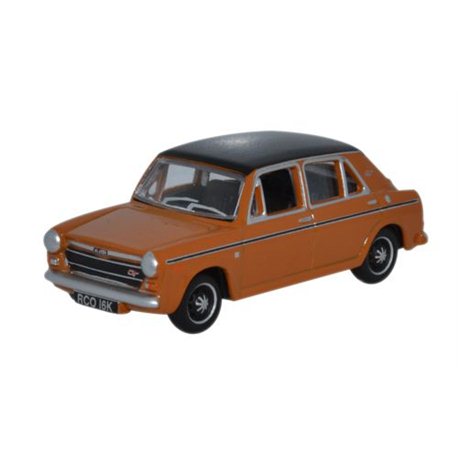No products
Product successfully added to your shopping cart
There are 0 items in your cart. There is 1 item in your cart.
Christmas and New Year
We are dispatching orders every weekday apart from Christmas Day, Boxing Day and New Year's Day.
If you order is time critical, select next day delivery at checkout.
The shop in Sandown is closed from 25th December, reopening on 30th December.
 View larger
View larger Austin 1300 Bronze Yellow
76AUS001
Oxford
Austin 1300 Bronze Yellow
From the same stable as the Issigonis Mini, this car was manufactured by the British Motor Corporation, which then became British Leyland.
OO gauge (1/76).
This product is out of stock
| Scale | OO (1/76) |
More info
Austin 1300 Bronze Yellow
From the same stable as the Issigonis Mini, this car was manufactured by the British Motor Corporation, which then became British Leyland. Classed as an economical compact family car, would-be owners had three body styles to choose from: the 4-door saloon (our model choice), 2-door saloon or 2-door estate.
Launched as the Morris 1100 in August 1962, the original range was extended to include several re-badged versions under BMC ownership, including the Austin. All came under the heading of ADO 16 (Amalgamated Drawing Office project No. 16) led by designer Alec Issigonis.
In October 1969, BMC unveiled the front engine, front-wheel drive Austin/Morris 1300 GT at the London Motor Show, when key features included a 1275 cc twin carburettor engine, a black full width grille, black vinyl roof and a thick black metal strip along the side, designed to convey a sporty image.
It was to be 1971 before the Mark III models appeared, lasting in production until 1974 when the range w as superseded by the Austin Allegro and the Vanden Plas 1500.
This four-door model registered RCO 16K dates back to 1972 and is decorated in one of the typical colour schemes of the day in Bronze Yellow with its black vinyl roof. Its GT logo features in red and silver on the radiator grille and its 1300 GT status is also printed on the offside of the boot.
The interior is black, as is the chassis and the broad black and silver stripe associated with the GT appears along both sides.
This Issigonis design was not destined to upstage or outlast the iconic Mini, which despite his genius remains the famous designer's greatest success story even today.

